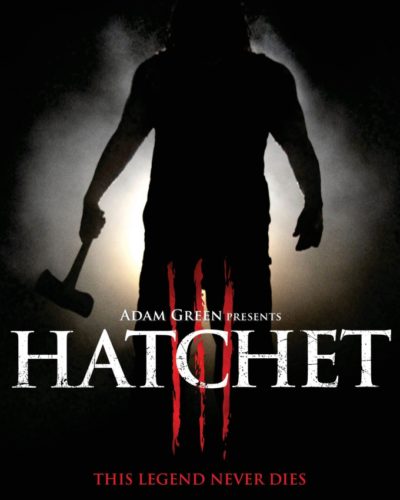The Butchery of Expectations: A “Hostel” Environment
“Be careful, you could spend all your money in there.” These foreboding words from a seemingly harmless character in Eli Roth’s 2005 gore-drenched horror film “Hostel” sets the stage for a tale that flips the carefree backpacking experience on its head in the most gruesome ways imaginable. Held in the grimy underbelly of Slovakia (though it could be anywhere, really), the premise of “Hostel” toys with the western fantasy of eastern Europe as a hedonistic playland, where three travelers find themselves lured into a horrifying reality far beyond any drunken escapade or lustful encounter.
Made to Make You Squirm: Crafting Unease in Every Frame
The atmosphere of “Hostel” isn’t one that relies on creeping dread or shadow-filled hallways; instead, Eli Roth opts for a sense of foreboding steeped in reality. The horror stems from the plausibility of the scenario, an extreme but conceivable outcome of every traveler’s worst nightmare. The bright daytime scenes and mundane interactions lull the viewer into a false sense of security, directly contrasting with the shock value of the torturous visuals that follow.
In shaping his vision of tension and fear, Roth often relies on pacing and misdirection. The first act’s flirtation with erotica and comedy almost deceives us into forgetting we signed up for horror, making the eventual dive into sadism all the more jarring.
The Devil’s in the Details: A Cinematic Slaughterhouse
The cinematography in “Hostel” is purposeful, with Roth using it to control the viewer’s experience meticulously. The color palette transitions from the warm, inviting tones of nightlife and flesh to the cold, bleak grays and blues of industrial slaughter. Camera angles become increasingly claustrophobic, mirroring the protagonists’ predicament. Noteworthy are the special effects that deliver a visceral realism to the gore, making seasoned horror fans squirm.
The sound design plays a crucial role, with distorted industrial noises creating an acoustic backdrop to the terror. Moments of silence magnify the tension, only to be shattered by the gut-wrenching screams or the sickening sound of flesh being mutilated.
The Human Meat Grinder: Performances That Bleed Authenticity
In terms of performances, the actors deliver a mix of hedonism and raw terror. Initially, the characters are not particularly deep, sketched as stereotypical American tourists. Yet, their reactions to the unfolding horror feel authentic and grounded, largely due to the actors’ commitment to portraying utter despair and disbelief. The transformation from carefree to cargo is the true character development in this narrative of nightmares.
Dismembering Comfort Zones: Horrors of the Flesh
“Hostel” dances in the playground of body horror, a subgenre that often exposes our fears of bodily destruction and violation. It challenges the conventions by intertwining these elements with a distinct socio-political commentary about consumerism, exploitation, and the commodification of life. Roth’s film employs a raw display of gore, using graphic violence and sudden shocks to terrorize his audience. The torture scenes are meticulously crafted, ensuring viewers feel every cut, crunch, and scream.
Yet it’s in the themes where “Hostel” truly aims to disturb. It paints an image of Western entitlement facing its consequences, a notion that resonates on a different level than the explicit carnage on display. This added layer gives the film a grim depth, suggesting that the true horror lies not in the gore, but in the implications of these transgressions.
Fear without Borders: Who Will Survive the “Hostel”?
For those with an appetite for unrelenting, visceral horror, “Hostel” will satisfy like a feast. It’s not for the faint of heart or those seeking a narrative veiled in mystery and suggestion. Rather, it’s a film that will leave a mark on those who enjoy the extremes of horror, the adrenaline junkies who crave cinematic experiences that push boundaries. Comparing it to contemporaries like “Saw,” “Hostel” arguably goes further, embracing its role as a grueling spectacle of human vulnerability.
As a word of caution, it’s important to note the explicit nature of the content. “Hostel” contains scenes that may trigger those sensitive to depictions of torture and graphic violence. Eli Roth’s film is not about ghosts or goblins; it’s about human monsters clad in business suits, an aspect that might be the most terrifying detail of all.
Checking Out of the “Hostel”: Final Verdict
In conclusion, “Hostel” stands as a brutal landmark in modern horror. Its strengths lie in its unflinching portrayal of torture and its underlying social commentary. Conversely, it suffers from a lack of subtle storytelling, and at times, characters’ decisions defy logic. Roth’s endeavor was to shock and provoke, not to craft a nuanced tale of terror, and on that front, he succeeds. Whether that approach is to your taste, will be the deciding factor in your enjoyment. For genre purists and those curious to test their limits, “Hostel” awaits to deliver a nightmarish experience. For others, consider this a do not disturb sign hung definitively on the door.




